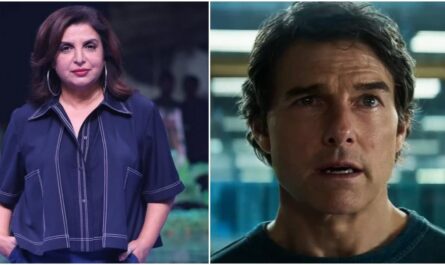Aamir Khan and Genelia Deshmukh’s recent reunion on the set of Sitaare Zameen Par has sent ripples of excitement through Bollywood and beyond. The veteran superstar and the beloved actress—who last shared screen space in the mid‑2000s—came together for a special, standalone song sequence that promises to be both uplifting and emotionally resonant. Slated for release at the end of May 2025, this “spiritual successor” to Taare Zameen Par has been shrouded in secrecy, making every new glimpse all the more tantalizing. Below, we dive deep into everything we know about this special song—from its conception and execution to its likely role in the film’s narrative tapestry—while also exploring why this collaboration matters, how it fits into Aamir Khan’s larger body of work, and what it reveals about the evolving landscape of Bollywood song sequences.
1. A Reunion Years in the Making
When news broke that Aamir Khan would be reuniting with Genelia Deshmukh—now Genelia D’Souza—fans of both actors rejoiced. Their previous collaborations, though limited, left a lasting impression: Genelia’s effervescent charm paired beautifully with Aamir’s thoughtful gravitas. In the years since, both have charted diverse paths: Aamir through critically acclaimed dramas and socially conscious cinema, Genelia through a mix of Hindi and South Indian films, marriage, and motherhood. Their on‑screen chemistry was never fully tested in a full‑length feature, making this special song all the more significant.
The decision to bring them together for a standalone track likely reflects several strategic and creative considerations:
- Emotional Resonance: Both actors excel at conveying warmth and vulnerability. A song sequence capitalizes on that strength, allowing them to connect with audiences on a purely emotive level, unencumbered by plot constraints.
- Promotional Appeal: In an era where star‑driven song teasers often kick‑start a film’s marketing, a high‑profile reunion can generate social media buzz, trending hashtags, and widespread anticipation well before the trailer drops.
- Narrative Framing: Even if the number plays only during end credits, its thematic content—celebrating triumph, camaraderie, or self‑discovery—can leave viewers with a lingering emotional uplift that reinforces the film’s core message.
2. The Shoot: Five Days of “Feel‑Good” Magic
The special song was filmed over an intensive five‑day schedule in Marol, Mumbai, under the direction of R. S. Prasanna, who also helms the main film. Prasanna—known for blending humor, heart, and social relevance in movies like Shubh Mangal Saavdhan—crafted this track to be a self‑contained vignette: a celebration of hope, inclusion, and the transformative power of human connection.
2.1 Choreography and Visual Style
Choreographed by Vijay Ganguly, the sequence reportedly features a mix of contemporary and folk‑inspired movements, designed to evoke both joy and unity. Ganguly’s choreography often emphasizes storytelling through gesture—small hand movements that convey emotion, group formations that symbolize community, and dynamic partner work that highlights individual relationships within a collective. According to on‑set accounts, the song intersperses solo moments—where Aamir and Genelia express personal revelation—with large‑ensemble sections that underscore the film’s sports‑drama backdrop.
Visually, the song employs vibrant color palettes—sunlit yellows, warm oranges, and earthy greens—contrasting with the more muted, documentary‑style look of the film’s principal narrative. This heightened aesthetic serves two purposes:
- Emotional Amplification: The bright hues and fluid camera movements mirror the song’s optimistic tone, creating an almost dreamlike interlude.
- Thematic Punctuation: By breaking from the film’s grounded realism, the song stands out as a celebratory bookend, leaving audiences with a sense of uplift as the credits roll.
2.2 Aamir and Genelia’s Performances
Aamir Khan, celebrated for his meticulous preparation, reportedly spent several days rehearsing the choreography alongside Ganguly, focusing not just on steps but on emotive authenticity—ensuring that every gesture and facial expression conveyed genuine warmth. Genelia, known for her natural ease in front of the camera, brought effervescence and spontaneity, balancing Aamir’s intensity with playful energy. Behind the scenes, the two actors’ camaraderie—reminiscent of old friends rediscovering shared passions—was palpable, translating into on‑screen chemistry that insiders describe as “electric.”
3. Where It Fits: Narrative vs. Post‑Credits
One of the most intriguing aspects of this special song is its placement. Industry whispers suggest it will likely appear during or immediately after the end credits, functioning as a montage that ties together the film’s central themes rather than as an integrated narrative sequence. This choice reflects broader trends in contemporary Bollywood:
- Standalone Sequences: While classic Bollywood musicals wove songs seamlessly into the storyline, modern films often reserve certain tracks for promotional use or post‑credits placement, preserving narrative momentum while still delivering musical spectacle.
- Post‑Credits Incentive: Borrowing from Hollywood’s post‑credits tradition, Indian filmmakers increasingly include bonus content—songs, bloopers, or teasers—to reward audiences who stay through the credits, enhancing the communal cinema‑going experience.
- Emotional Resonance: A post‑credits song allows viewers to exit the theater on a high note, the music reinforcing the film’s emotional journey without interrupting its final dramatic beats.
Whether audiences will see glimpses of the song during the theatrical run—perhaps in teasers or as part of a soundtrack release—remains to be seen. But its existence as a post‑credits piece ensures that even those who have completed the emotional arc of the story receive one final moment of uplift.
4. Thematic Significance: Echoes of Taare Zameen Par and Campeones
Sitaare Zameen Par is described as a “spiritual successor” to Aamir’s landmark 2007 film Taare Zameen Par, which explored childhood learning disabilities through a sensitive, character‑driven lens. In contrast, this new project focuses on a group of adult men with intellectual disabilities who discover self‑worth and direction through sports—a premise adapted from the Spanish film Campeones (2018). The special song, then, serves multiple thematic functions:
- Celebration of Achievement: Just as Taare Zameen Par culminated in a triumphant art competition, this song celebrates personal victories—big and small—achieved through perseverance, teamwork, and mutual support.
- Community and Inclusion: The ensemble choreography and montage elements likely showcase not just the leads but the supporting cast—representing the wider community of characters whose lives are transformed through shared goals.
- Emotional Catharsis: Music and dance, in this context, become vehicles for emotional release—allowing both characters and audience to process challenges and emerge with renewed hope.
By bookending the film with this “feel‑good” track, the filmmakers create a narrative symmetry: a journey from struggle to celebration, from isolation to communal joy.
5. Aamir Khan’s Comeback and Career Arc
Aamir Khan’s last on‑screen appearance was in Laal Singh Chaddha (2022), a commercial underperformer that nevertheless underscored his willingness to tackle unconventional stories. With Sitaare Zameen Par, he returns to the thematic terrain of social issues and human resilience—territory that has defined much of his career, from Rang De Basanti to Dangal. This special song:
- Reaffirms His Brand: Audiences have come to expect from Aamir films that blend entertainment with empathy. A joyous, uplifting song aligns perfectly with that expectation.
- Highlights His Versatility: While he’s lauded for dramatic depth, Aamir’s participation in an upbeat, celebratory musical number underscores his ability to inhabit lighter, more playful cinematic moments.
- Signals Industry Trends: In an era where content diversity is paramount, star‑driven musical sequences remain potent tools for engagement—especially when they feature beloved pairings like Aamir and Genelia.
For Genelia Deshmukh, this sequence marks a significant Bollywood comeback. After focusing on regional cinema and personal commitments, her presence alongside Aamir in a high‑profile song positions her once again at the heart of mainstream Hindi film conversations.
6. Music, Lyrics, and Soundtrack Strategy
Though the composers and lyricists for this particular song have not been officially announced, Sitaare Zameen Par’s overall music direction is handled by the celebrated trio Shankar–Ehsaan–Loy. Known for their versatility—from the rock‑infused “All Is Well” (3 Idiots) to the soulful “Maa” (Taare Zameen Par)—they are well‑placed to deliver a track that balances infectious energy with emotional depth. Key elements to anticipate:
- Melodic Hooks: A catchy chorus that audiences can sing along to, ensuring the song’s longevity on streaming platforms and radio.
- Lyricism: Words that echo the film’s core themes—resilience, self‑discovery, community—crafted to resonate both within the narrative and in standalone listening contexts.
- Instrumentation: A blend of traditional Indian percussion and contemporary production, mirroring the film’s fusion of heartfelt storytelling and modern sensibilities.
Given the song’s likely role as a promotional linchpin, it may be released as a single ahead of the full soundtrack, accompanied by a music video featuring key sequences from the film.
7. Marketing and Audience Engagement
The unveiling of this special song will play a central role in Sitaare Zameen Par’s promotional roadmap:
- Teaser Snippets: Short clips—10 to 15 seconds—shared on social media to build anticipation, highlight choreography, and showcase the Aamir‑Genelia pairing.
- Music Launch Event: A live or virtual event featuring performances by Shankar–Ehsaan–Loy, appearances by Aamir and Genelia, and behind‑the‑scenes footage of the shoot.
- Interactive Campaigns: Hashtag challenges (e.g., #SitaareSongChallenge) inviting fans to recreate choreography steps, fostering user‑generated content and organic reach.
- Cross‑Platform Promotion: Integration with streaming services, radio partnerships, and branded content on digital platforms to maximize visibility.
By leveraging both traditional media (TV spots, print interviews) and digital channels (Instagram Reels, TikTok), the film’s team can ensure that the song becomes a cultural moment in the lead‑up to the May release.
8. The Broader Significance of Special Song Sequences
Special songs—those filmed outside the main narrative arc or reserved for end credits—have a storied history in Bollywood. They serve multiple purposes:
- Narrative Punctuation: Offering a tonal shift or emotional summary without altering the story’s core structure.
- Star Showcases: Providing actors an opportunity to shine in glamorous, high‑energy settings—often in elaborate sets or exotic locations.
- Commercial Leverage: Creating standalone hits that drive soundtrack sales, streaming numbers, and brand tie‑ins (e.g., music videos, merchandise).
- Audience Retention: Encouraging viewers to stay through the credits, enhancing box‑office metrics like total runtime and concession sales.
In the digital age, where attention spans are fragmented and music discovery happens across platforms, special songs can transcend the film itself—becoming viral sensations, concert staples, and cultural touchpoints in their own right.
9. Looking Ahead: What to Expect on Release
As Sitaare Zameen Par nears its late‑May 2025 release, here’s what fans and film‑goers should watch for:
- Music Video Drop: The full special song video will likely launch three to four weeks before theatrical release, providing the first extended look at Aamir and Genelia together.
- Behind‑the‑Scenes Features: Short documentaries on the making of the song—covering choreography rehearsals, costume design, and directorial vision—will deepen audience engagement.
- Soundtrack Reception: Chart performance on music platforms and radio will signal public response; a strong debut can bolster box‑office prospects.
- Post‑Credits Surprise: Movie‑goers who stay through the credits will experience the song in its intended context, cementing its role as the film’s emotional denouement.
Ultimately, the success of this special song will depend not just on its melodic appeal but on how well it encapsulates the film’s message: that everyone, regardless of ability, deserves to shine.
10. Conclusion: A Moment to Shine
The decision to craft a standalone, feel‑good song featuring Aamir Khan and Genelia Deshmukh underscores the enduring power of music and dance in Bollywood storytelling. It is a celebration—of actors reunited, of characters’ journeys, and of audiences’ capacity for empathy and joy. As the song takes shape under the guidance of R. S. Prasanna, Vijay Ganguly, and the musical genius of Shankar–Ehsaan–Loy, it promises to be a cultural highlight of 2025, reminding us that in cinema, as in life, the brightest moments often come when we least expect them.
With Sitaare Zameen Par poised to land in theaters this May, the special song serves as both a promise and a preview: a promise that the film will uplift and inspire, and a preview of the magic that happens when two generations of talent come together in celebration. Prepare to press “play,” tap your feet, and let these stars light up the sky—because in this song, everyone gets a chance to shine.



